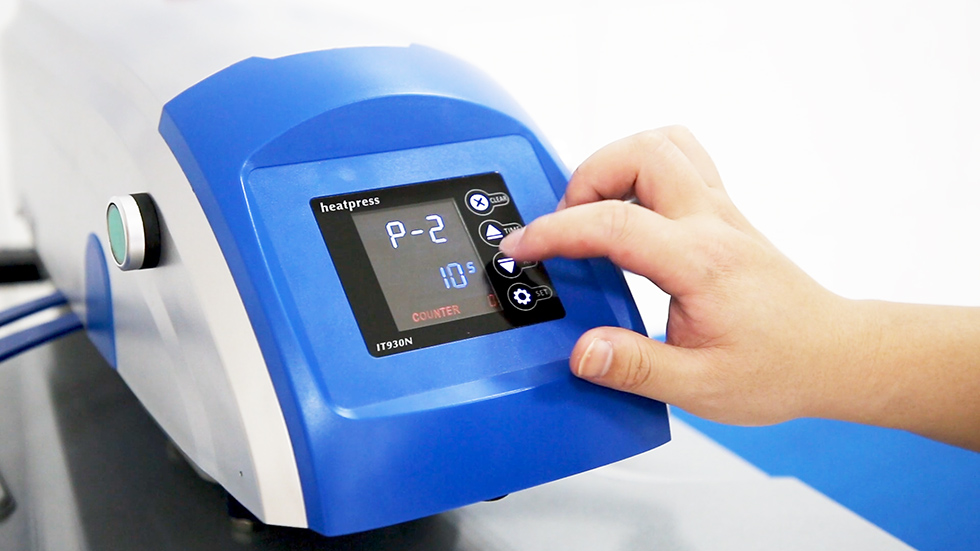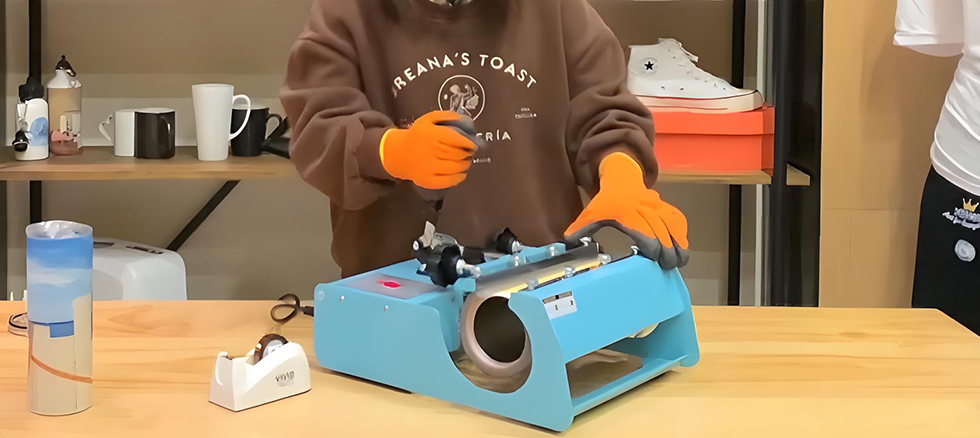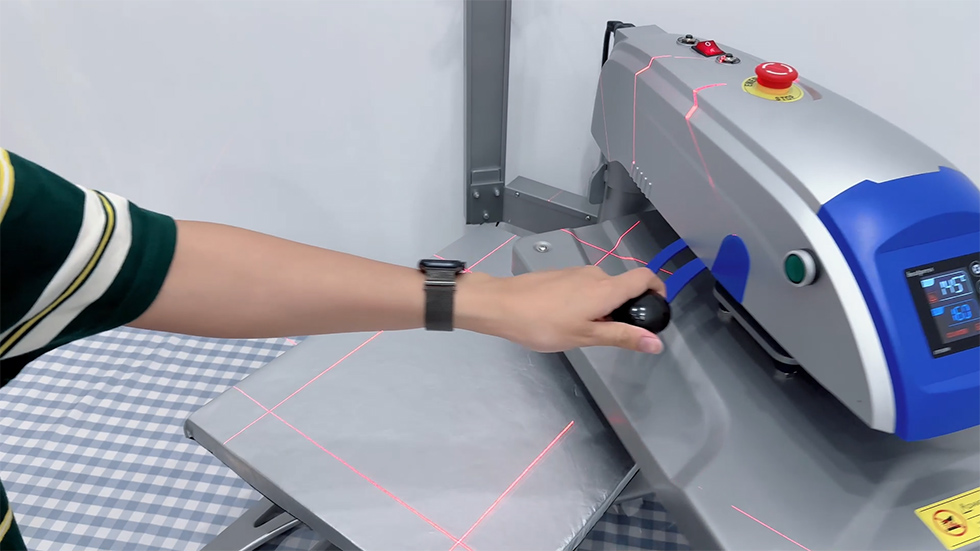When using a heat press machine for printing transfer, safe operation can not only protect the health of personnel, but also extend the life of the equipment and improve production efficiency. Starting from the basic functions and safety significance of the heat press machine, this article elaborates on the five precautions for operating the heat press machine, combined with FAQs and maintenance suggestions, to help you achieve high-quality printing while effectively preventing accidents such as burns, pinching and fire, and improve the safety management level of the workshop.
A heat press is a device that uses high temperature and high pressure to fix heat transfer materials (such as HTV, DTF, sublimation film, etc.) on the surface of textiles. It is widely used in the custom production of T-shirts, canvas bags, mouse pads, etc.
Because the temperature of the heat press heating plate can reach hundreds of degrees Celsius and it works under high pressure, improper operation can easily cause burns, equipment damage and even fire hazards. Safety regulations must be strictly followed to ensure the safety of personnel and equipment

Stable placement: Place the heat press on a flat, stable and high-temperature resistant table to avoid equipment tipping or heat loss
Clean and ventilated: Keep the operating area free of debris, turn on the exhaust system or maintain natural ventilation to prevent odor and harmful gas accumulation when sublimation or plastic materials are heated
Temperature matching: Different materials have different temperature requirements. We recommend 150–165°C for DTF , 150–165°C for HTV , and 190–200°C for sublimation transfer. Be sure to preset the temperature according to the material instructions
Timed monitoring: Strictly perform heat pressing according to the recommended time (such as DTF for 10–12 seconds, HTV for 8–12 seconds, sublimation for 20–25 seconds) to avoid poor printing effects or fabric damage due to overtime or lack of time
·High temperature resistant gloves: Be sure to wear professional high temperature resistant gloves during operation to prevent direct contact with the high temperature heating plate and cause burns
·Non-slip shoes: Wear non-slip closed shoes to reduce the risk of falling or foot burns
·Avoid loose clothing: Do not wear loose cuffs, long scarves, and other clothing that is easily caught by the machine to avoid accidents

·Keep a safe distance: Do not put your hands or other parts of your body into the heating area during operation, especially when pressing and auto-opening. Be sure to wait until the equipment is completely closed before moving your hands.
·Use auxiliary tools: If you need to correct the printing position, use tools such as high-temperature resistant silicone pads, metal clips or special scrapers first to avoid direct adjustment by hand.
Timely power off: Immediately turn off the power and unplug the plug after completing the heat pressing to prevent the equipment from being powered on for a long time, causing overheating or electrical failure.
Cooling and cleaning: Clean and maintain the equipment after it cools to room temperature. Do not wipe the heating plate at high temperature to avoid damaging the coating or causing personal injury.
Regular inspection: Regularly check the power cord, control panel and pneumatic pipeline (such as pneumatic models), replace aging parts in time to ensure stable equipment performance and eliminate safety hazards.

Q1: Can the heat press be placed on any table?
A1: It should be placed on a high temperature resistant, stable and flat table, avoiding flammable or easily deformed surfaces such as wood or plastic to ensure safety and heat conduction effect
Q2: Can the heating plate be opened for inspection during the heat pressing process?
A2: It is not recommended to open the heating plate at will under heating or pressurization to prevent sudden cooling from affecting the printing effect and the risk of high temperature burns
Q3: How to deal with alarms or abnormalities of the wholesale heat press machine?
A3: If an overheating, overvoltage or electrical fault alarm occurs, the power should be turned off immediately to check the circuit and control module. If self-check is not possible, please contact professional after-sales service.
Q4: Can it be used continuously for 24 hours?
A4: It is not recommended to run continuously for a long time. Interval cooling and regular maintenance should be performed to extend the life of the equipment and ensure stability.
Regularly clean the heating plate: Use a soft cloth and special detergent to remove residual film and ink to maintain heat conduction efficiency.
Check pneumatic and electrical components: Regularly check pneumatic pipelines, cylinders and power lines to ensure that there is no leakage or wear, and replace aging parts in time
Lubricate the moving mechanism: Regularly put high-temperature resistant lubricating oil into the swing mechanism, slide rails and other metal components to keep them running smoothly
Calibrate the temperature control system: Perform temperature calibration every six months to ensure that the temperature display is consistent with the actual temperature to avoid affecting the printing effect due to deviation
Follow the manufacturer's manual: Strictly follow the user manual for daily maintenance and regular inspections, and contact professional technical support when necessary to extend the service life of the equipment
Safe operation is the basis for efficient and stable operation of the heat press. Through the five precautions of environmental and equipment inspection, accurate parameter setting, wearing protective equipment, avoiding scalding and pinching, and standardized maintenance, you can effectively reduce the risk of accidents and ensure that both printing quality and production efficiency are improved. I hope this article can help you improve the safety management of the heat press, so that each transfer can be completed smoothly in a controllable and safe environment, and together promote the sustainable and healthy development of the printing industry!